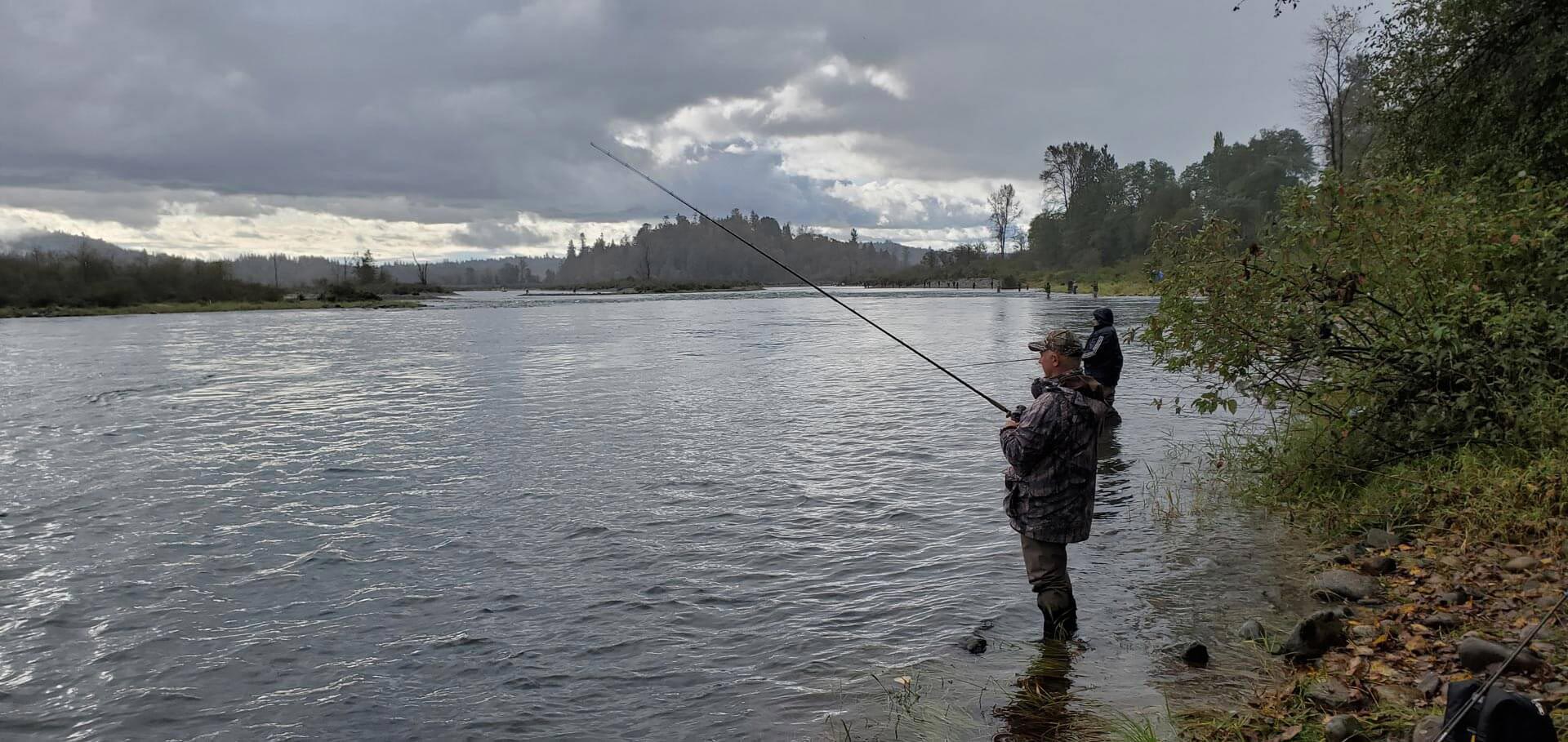October 12th, or Thanksgiving weekend is usually the marker for when the major waves of the great pacific salmon families swim into the mighty Fraser River River and return to their natural rivers and tributaries connected to the Fraser.
My friend and I ear marked this day and as it is a Canadian holiday he had the day off so we decided to hit Stave River located in Chilliwack B.C.
We left at 6AM and arrived at 7AM. Due to the closure of the Fraser, the parking lot was fully packed with other anglers. By the time we arrived, the banks were filled with other eager fishermen. We were able to snag a spot just in front of the dam where the salmon were stacked.

There were many fish rising, however mostly darker fish. my friend hooked a 20lb chum among his first cast and the fish took a wild run before breaking off. I decided to dedicate my day to twitching jigs. Armed with my Shimano sustain reel and Gloomis E6x rod, I was running a 20lb braid. This setup was perfect for detecting the slightest bites and allowing for a strong hook set. I chose this rod as it is a fast action tip rod, however when a fish is hooked the entire rod bends, acting as a medium action rod which allows better control over the fish. This is exactly what you want in a jigging rod, a stiffer rod during casting results in farther casts and detecting the most sensitive bites. And when hooked, the rod bends to allow control.
I run with a 20lb braided line, as the braid has no stretch and provides a 1:1 feel if sensitivity becomes a factor, especially when jigging. The 20lb braid is dynamic which allows catching of both small and large fish. But most importantly I run with a 20lb braid as it mirrors a 6lb mono line diameter. Most beginner fishermen don’t understand why they cannot cast far, let me tell you right now that line diameter is the most important factor in casting distance. I am able to easily cast 100 meters off a 1/4oz spoon with this set up. Braid is thinner than fluoro or mono line, of the same strength category. This casting distance, in return means your lure/bait is in the water for longer periods, therefore resulting in a higher chance of enticing a fish.

As I trot down the beach towards the dam, I found myself a large rock perched along the seams of the fast and slow current. I climbed on top and I began casting into the swift current on my left allowing my jig to flow with the quick current downstream. As the jig exits the fast current it begins its descent towards the bottom of the calmer waters. This is where fish typically like to hold (dependent on the species, as the fish spend less energy fighting the strong currents) the jig slowly falls to the holding fish along the bottom. The moment I feel the jig almost touch bottom, I begin twitching the jig by lifting the rod and letting it fall while retrieving. This creates a very unique movement which fish cannot resist. The key is to get this jig in front of their faces. It is in Salmons nature to bite anything that gets in their way during this stage in their life, as they are extremely aggressive and territorial.
On my third cast, as the jig was exiting the fast currents, I felt a thud. My line tightened, I didn’t even have enough time to react, when my reel started to scream.. almost ripping the rod right out of my hand. This fish took off like a lightning bolt and jolted into the depths of the swift current. My heart was racing as I was eyeing my spool, it was peeling so much line I was afraid a tank of a fish would out-spool me. I held on to dear life, rod fully bent over… reel still screaming. About 100 meters out, the fish made a huge airborne jump.. unfortunately releasing and dislodging itself from my jig. The sheer excitement came to a sober halt as I was left there holding my limp line.. the fish was gone.
After losing and missing many fishes, I switched my jig to a wiggly tail. Fishing is also about trying and learning new things, I had never seen anyone use a wiggly worm tail other than for bass. So I figured why not? On the 3rd cast I felt a tug followed by multiple head shakes. The fish ran and peeled the line, however this time I did not allow it to run into the swift currents. I tightened my drag and forced him into calmer waters. I was able to turn its head by shifting the tip of the rod to the opposite direction. After battling this beast for 10 minutes, I was able to finally land it. It was a large 15lb male Chum salmon. I was exhausted but thrilled.
Today I learned I have learned a new technique for jig casting and that trying new lures can sometimes surprisingly produce fish when you least expect it.
After losing and missing many fishes, I switched my jig to a wiggly tail. Fishing is also about trying and learning new things, I had never seen anyone use a wiggly worm tail other than for bass. So I figured why not? On the 3rd cast I felt a tug followed by multiple head shakes. The fish ran and peeled the line, however this time I did not allow it to run into the swift currents. I tightened my drag and forced him into calmer waters. I was able to turn its head by shifting the tip of the rod to the opposite direction. After battling this beast for 10 minutes, I was able to finally land it. It was a large 15lb male Chum salmon. I was exhausted but thrilled.
Today I learned I have learned a new technique for jig casting and that trying new lures can sometimes surprisingly produce fish when you least expect it.

